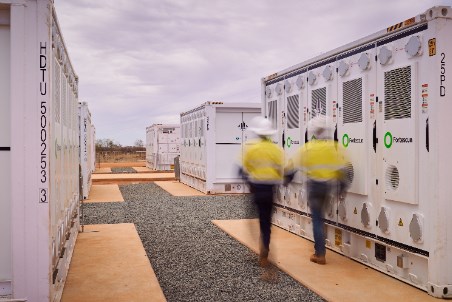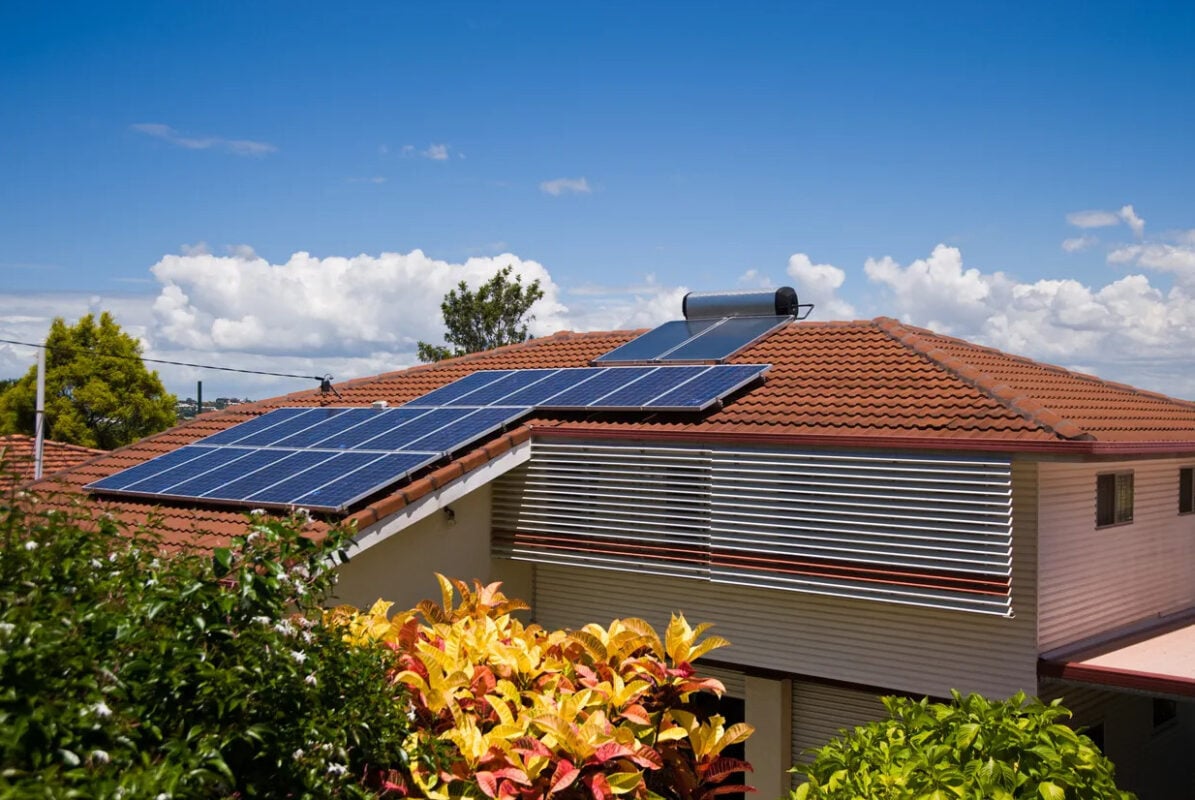Containerized Battery Energy Storage System (BESS) Market worth $35.82 billion by 2030 – Exclusive Report by MarketsandMarkets™ – PR Newswire

Market Analysis of Containerized Battery Energy Storage Systems (BESS) and Contribution to Sustainable Development Goals
Executive Summary
The global market for Containerized Battery Energy Storage Systems (BESS) is forecast to experience significant growth, expanding from USD 13.87 billion in 2025 to USD 35.82 billion by 2030, reflecting a compound annual growth rate (CAGR) of 20.9%. This expansion is fundamentally linked to the global pursuit of the United Nations Sustainable Development Goals (SDGs). As a key enabling technology, containerized BESS is critical for advancing SDG 7 (Affordable and Clean Energy), SDG 9 (Industry, Innovation, and Infrastructure), SDG 11 (Sustainable Cities and Communities), and SDG 13 (Climate Action) by facilitating the transition to a decarbonized and resilient global energy system.
Market Projections and Growth Dynamics
- Market Revenue (2025): USD 13.87 billion
- Estimated Value (2030): USD 35.82 billion
- Compound Annual Growth Rate (CAGR): 20.9%
- Forecast Period: 2025–2030
Alignment with Sustainable Development Goals (SDGs)
The growth of the containerized BESS market is driven by its direct contributions to several key SDGs:
- SDG 7 (Affordable and Clean Energy): BESS is instrumental in stabilizing power grids by storing energy from intermittent renewable sources like solar and wind. This function makes clean energy more reliable and accessible, accelerating the transition away from fossil fuels and ensuring a consistent supply of affordable energy.
- SDG 9 (Industry, Innovation, and Infrastructure): These systems represent a critical innovation for modernizing energy infrastructure. Their modular and scalable nature allows for the rapid deployment of resilient energy solutions, supporting sustainable industrialization and enhancing grid flexibility.
- SDG 11 (Sustainable Cities and Communities): Containerized BESS supports the development of sustainable urban environments by enabling microgrids, providing reliable backup power, and facilitating the expansion of electric vehicle (EV) charging infrastructure, thereby making cities more resilient and sustainable.
- SDG 13 (Climate Action): By enabling greater penetration of renewable energy into the grid, BESS directly supports global decarbonization efforts. This technology is a cornerstone of strategies aimed at mitigating climate change by reducing greenhouse gas emissions from the power sector.
Market Segmentation Analysis
Battery Technology and Sustainability
The advanced lead-acid battery segment is projected to hold a significant market share. While lithium-ion technology is prevalent, advanced lead-acid batteries offer distinct advantages that align with sustainability objectives.
- Cost-Effectiveness: Lower upfront costs make them suitable for budget-sensitive applications, promoting wider access to energy storage.
- Recyclability: A high degree of recyclability supports the principles of a circular economy, aligning with SDG 12 (Responsible Consumption and Production).
- Application: Their use in microgrids, rural electrification, and backup power systems directly contributes to energy access and resilience goals under SDG 7 and SDG 11.
Capacity Segmentation
The 1,000–5,000 kWh capacity segment is expected to dominate the market due to its versatility.
- Optimal Balance: This range provides an ideal balance of capacity, cost, and flexibility for commercial, industrial, and utility-scale projects.
- Key Applications: It is well-suited for mid-scale deployments such as EV charging hubs, manufacturing facilities, and municipal substations, which are crucial for building the sustainable infrastructure required by SDG 9 and SDG 11.
Regional Analysis: Europe’s Leadership in Sustainable Energy Transition
Europe is positioned to maintain a significant share of the containerized BESS market, driven by its commitment to climate and energy goals.
- Policy Frameworks: Ambitious initiatives like the European Green Deal and Fit for 55 directly promote the deployment of energy storage to achieve climate targets aligned with SDG 13.
- Renewable Integration: The region’s high penetration of renewable energy necessitates advanced storage solutions to ensure grid stability, a core component of achieving SDG 7.
- Infrastructure Modernization: Heavy investment in localized battery manufacturing and energy infrastructure reinforces supply chain resilience and supports the development of innovative, sustainable industries as outlined in SDG 9.
Analysis of Sustainable Development Goals in the Article
1. Which SDGs are addressed or connected to the issues highlighted in the article?
-
SDG 7: Affordable and Clean Energy
The article directly addresses SDG 7 by focusing on Battery Energy Storage Systems (BESS), which are critical for the “increasing integration of renewable energy sources” like solar and wind. It highlights how BESS enables the “clean energy transition” by providing reliable power and managing the intermittency of renewables.
-
SDG 9: Industry, Innovation, and Infrastructure
The article connects to SDG 9 through its discussion of “grid modernization” and investments in “energy storage infrastructure.” BESS represents an innovative technology that upgrades existing energy infrastructure to be more resilient, flexible, and capable of supporting modern demands like EV charging and renewable energy integration.
-
SDG 11: Sustainable Cities and Communities
SDG 11 is relevant as the article mentions the deployment of BESS in “urban energy projects,” “EV charging hubs,” and “microgrids.” These applications contribute to creating more sustainable and resilient urban environments by ensuring reliable power, supporting clean transportation, and decentralizing energy systems.
-
SDG 13: Climate Action
The article is fundamentally linked to SDG 13. It states that the growth of the BESS market is driven by an intensified “global focus on decarbonization” and “ambitious climate policies” such as the “European Green Deal.” BESS technology is presented as a “key enabler” for reducing emissions by facilitating a shift away from fossil fuels to renewable energy sources.
2. What specific targets under those SDGs can be identified based on the article’s content?
-
Target 7.2: Increase substantially the share of renewable energy in the global energy mix
The article explains that BESS is crucial for addressing the “key challenges associated with intermittent solar and wind power.” By storing energy from these sources, BESS allows for a more stable and reliable supply, thereby directly supporting and enabling a higher share of renewables in the grid.
-
Target 9.1: Develop quality, reliable, sustainable and resilient infrastructure
The article points to this target by describing how BESS improves “grid flexibility” and provides “reliable backup power.” This technology enhances the resilience of energy infrastructure against disruptions and supports new demands from “rural electrification” and “EV charging hubs.”
-
Target 9.4: Upgrade infrastructure and retrofit industries to make them sustainable… with greater adoption of clean and environmentally sound technologies
BESS is presented as a clean technology that facilitates “grid modernization” and the “electrification of industries.” Its adoption, as detailed in the article, is a direct step toward upgrading energy infrastructure to be more sustainable and efficient.
-
Target 13.2: Integrate climate change measures into national policies, strategies and planning
The article highlights that market growth is driven by “supportive policies, renewable integration mandates,” and “ambitious climate policies” like the European Green Deal. This shows the integration of climate goals into national and regional strategies, with BESS deployment being a tangible outcome of such policies.
3. Are there any indicators mentioned or implied in the article that can be used to measure progress towards the identified targets?
-
Financial Investment in Clean Energy Technology
The article provides a clear financial indicator of progress. The projection of the containerized BESS market growing from “USD 13.87 billion in 2025 to USD 35.82 billion by 2030” serves as a direct measure of the financial flows and investment being directed towards clean energy infrastructure, relevant to Target 7.a and 9.4.
-
Market Growth Rate of Enabling Technologies
The projected Compound Annual Growth Rate (CAGR) of “20.9%” for the BESS market is an indicator of the rapid adoption of technologies that enable renewable energy integration. This growth rate implies an accelerating capacity to increase the share of renewables in the energy mix (Target 7.2).
-
Adoption of Supportive Policies and Mandates
The article’s mention of “supportive policies, renewable integration mandates,” and initiatives like the “European Green Deal” and the “European Battery Alliance” implies the existence of national and regional plans to combat climate change. The number and scope of these policies can be used as an indicator for Target 13.2.
-
Deployment in Specific Applications
The article’s reference to BESS deployment in “microgrids, telecom infrastructure, rural electrification,” and “EV charging hubs” can be used as a qualitative and quantitative indicator of progress in building resilient and sustainable infrastructure (Target 9.1).
4. Summary of SDGs, Targets, and Indicators
| SDGs | Targets | Indicators |
|---|---|---|
| SDG 7: Affordable and Clean Energy | 7.2: Increase substantially the share of renewable energy in the global energy mix. | The market growth rate (CAGR of 20.9%) of BESS, a key technology for enabling the “integration of renewable energy sources.” |
| SDG 9: Industry, Innovation, and Infrastructure | 9.1: Develop quality, reliable, sustainable and resilient infrastructure. 9.4: Upgrade infrastructure… with greater adoption of clean and environmentally sound technologies. |
Deployment of BESS in applications like “microgrids,” “rural electrification,” and “EV charging hubs.” Market size projection (USD 13.87 billion in 2025 to USD 35.82 billion by 2030) reflecting investment in clean infrastructure technology. |
| SDG 11: Sustainable Cities and Communities | 11.6: Reduce the adverse per capita environmental impact of cities. | Use of BESS in “urban energy projects” and “EV charging hubs” to support cleaner energy and transport systems in cities. |
| SDG 13: Climate Action | 13.2: Integrate climate change measures into national policies, strategies and planning. | Reference to “ambitious climate policies,” “renewable integration mandates,” and the “European Green Deal” as key market drivers. |
Source: prnewswire.com

What is Your Reaction?
 Like
0
Like
0
 Dislike
0
Dislike
0
 Love
0
Love
0
 Funny
0
Funny
0
 Angry
0
Angry
0
 Sad
0
Sad
0
 Wow
0
Wow
0



















































.jpg.webp?itok=0ZsAnae9#)

























